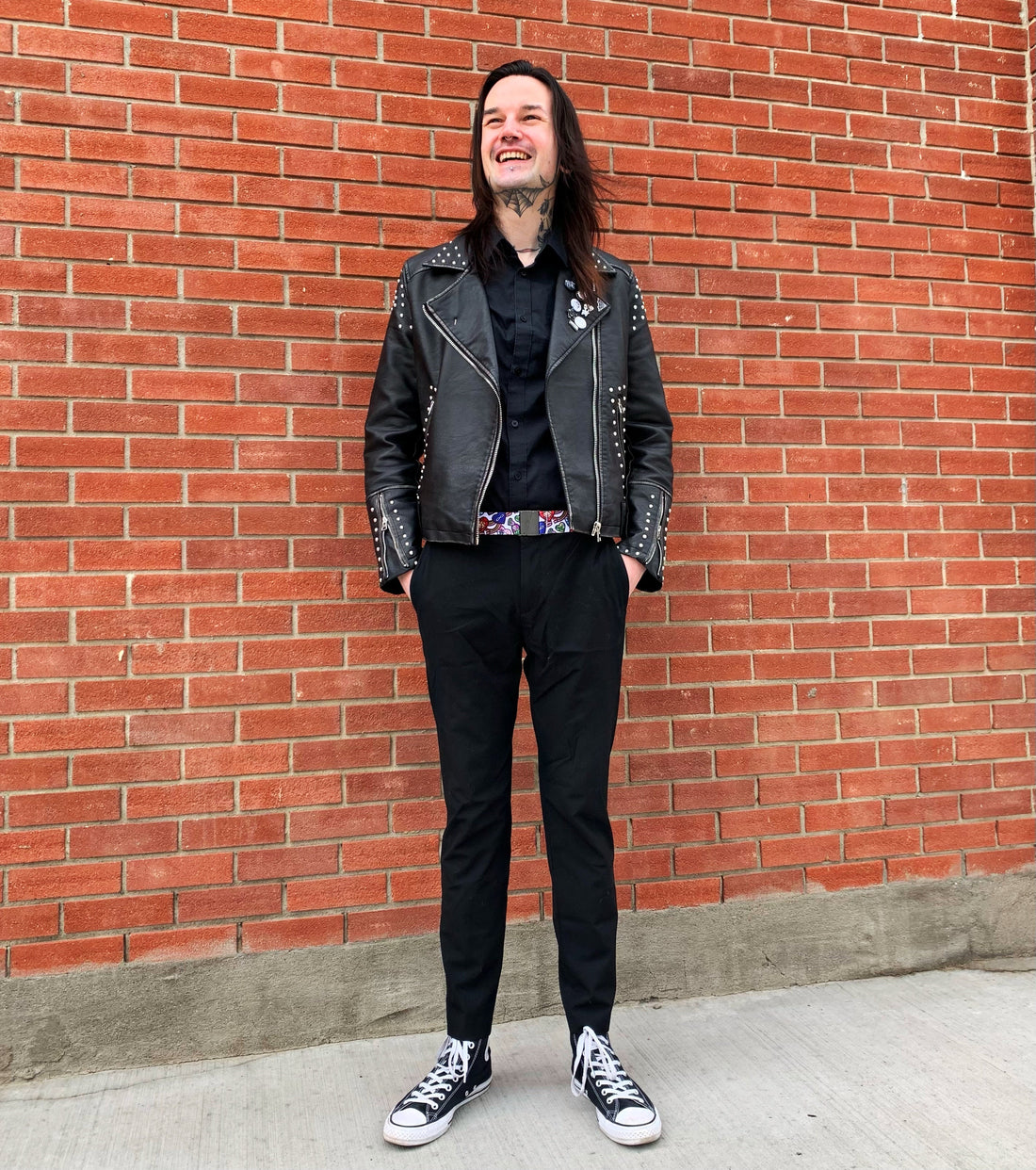
Meet Daniel Callihoo (aka Chelsea Horrendous) - Musician and Drag Queen Extraordinaire
Share
We're delighted to introduce Daniel Callihoo (aka Chelsea Horrendous): drag artist, musician, and most recently - Lance Cardinal X Unbelts model.
Don't be fooled by the name or the face tattoos. We had the pleasure of chatting with Daniel and can confirm his off-stage personality is the opposite of horrendous. In our conversation, he shared about his love of drag, his family history and how people can support Indigenous artists.
What do you love about drag?

First and foremost, just being creative. There’s so many disciplines with drag: you’re doing music, you’re doing make-up, you’re doing fashion, you’re doing hair. The sky's the limit.
I was asked to do a drag show nine years ago and I initially thought that it was going to be a one-time thing, but it was a paid gig and I thought ‘hey maybe I’ll do this another time’. My second gig was for NextFest. I kept the ball rolling because I like being creative.
How can people support Indigenous artists?
Compensate people fairly. And if you can’t support financially, share Indigenous artists’ work. But also, stay away from tokenism and make sure your support is genuine - share things if you like them.
(Editor's Note: You can watch, stream, and support Daniel's work here.)
What is one thing you hope people learn about or reflect on this Indigenous History Month?
Over the pandemic, I’ve been looking into our family history and the history of the Michel First Nation. It’s been incredibly eye-opening. One thing that’s always interested me is what my last name “Callihoo” means. I learned it’s an anglicized version of Karhiio which means tall, beautiful forest in Mohawk. And with the new ward names in Edmonton, there’s now a ward Karhiio.
People are starting to learn Indigenous history in Canada, but a lot of the focus seems to be on the terrible things that have happened. And yes, absolutely do learn about those, but also take the time to learn about the uplifting stories and the positive things in Indigenous history.
I also have a big problem with performative allyship. Something will happen and there will be a symbolic gesture as a response (like changing a street name or lowering flags), and then the news cycle moves on without meaningful reflection or change.
You can learn more about the history of the Michel First Nation and the meaning of the word Karhiio here. Find out what Indigenous land you live and work on using this interactive map. Here at Unbelts, we are on Treaty 6 Territory, which extends across present-day Alberta and Saskatchewan; a traditional meeting ground for many Indigenous peoples, in particular the Cree, Saulteaux, Blackfoot, Dene and Nakota Sioux, and the Métis Nation of Alberta Region 4; on whose territory we live, work, and stand.
